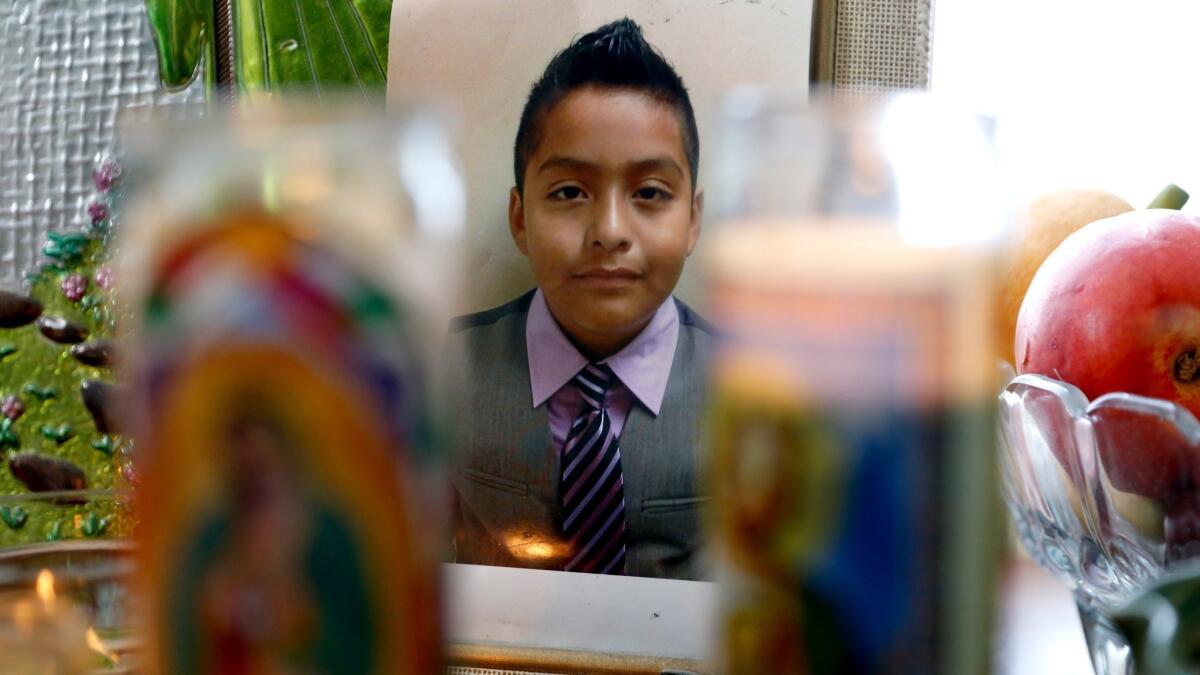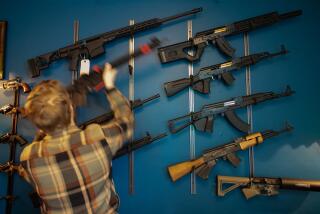Under new policy, LAPD officers who shoot someone will wait at least 14 days before returning to the field

- Share via
Los Angeles police officers who shoot someone will have to wait at least two weeks before returning to the field under a policy approved Tuesday by the five-member civilian panel that oversees the department.
Until now, officers could resume their regular duties with the police chief’s approval after a briefing that is done within 72 hours of a shooting. Time away from the field typically ranged from one to two weeks.
The new policy adopted unanimously by the Police Commission also strengthens training and psychological counseling requirements. It applies to officers who injure or kill someone in a shooting.
The expanded wait brings L.A. more in line with cities such as San Francisco, Chicago and New York, said Chuck Wexler, executive director of the Police Executive Research Forum, a nonprofit based in Washington, D.C.
“Given what we know about officer-involved shootings, there’s just a period of time they need — mental health days — to deal with one of the most traumatic situations they’ll ever face,” Wexler said.
The changes had been in the works since 2016, when a report by the Police Commission’s inspector general compared the LAPD’s use-of-force policies with those of several other police agencies.
Las Vegas police officers, for example, attend two counseling sessions before department officials decide whether they can resume their regular duties — typically in two or three months.
Wexler said the LAPD’s two-week waiting period is “reasonable and probably necessary.”
In Los Angeles, as elsewhere, most police officers end their careers without having fired their guns in the field. For those who do injure or kill someone, the experience can be traumatic, even if the shooting appears justified.
The new policy requires that the additional training be conducted by the department’s training division and include simulated scenarios that mirror the real-life shooting by the officer.
The policy also codifies a requirement in place since January 2017 of three sessions with a department psychologist, including one within 72 hours of the shooting.
“It’s hard to admit that we need help, and it can be particularly difficult for police officers,” Commissioner Shane Murphy Goldsmith said. “This is making sure we understand that it’s natural to need support during that period. A waiting period is the right thing to do.”
Swift mental health assistance is essential to prevent symptoms similar to those in post-traumatic stress disorder, Commission President Steve Soboroff said.
“I thought, as a layman, that somebody’s about to kill me, I shoot, and that’s it,” Soboroff said. “I didn’t realize how it affects these officers, that they took another life, even when their life was in jeopardy. They need support, and that support needs to come quick.”
The Los Angeles Police Protective League said in a statement that the two-week waiting period was “a common sense approach to ensuring our officers have an opportunity to process their experience and are prepared to resume their duties.”
In the summer of 2016, as the inspector general’s office was preparing its research on waiting periods, LAPD Officer Eden Medina fatally shot 36-year-old Omar Gonzalez. Twelve days later, Medina fired his gun again, killing 14-year-old Jesse Romero.
Medina had returned to the field six days after the first shooting.
The LAPD said that both victims were carrying guns. But Humberto Guizar, an attorney who represents the Medina and Gonzalez families, said video evidence shows that neither was armed.
“He was back to work in 12 days, working a high-risk area,” Guizar said of Medina. “Why put a police officer who had just killed somebody — why put him out there?”
Larry Hanna, an attorney who represented Medina after the shootings, said there should not be a bright-line rule for how long officers stay on the sidelines.
“Keeping officers out of the field for a certain amount of time is not going to reduce officer-involved shootings,” Hanna said. “It’s bad guys who come at officers with guns and require them to use deadly force.”
So far in 2018, LAPD officers have shot 24 people — 10 fewer than at this time last year, Chief Michel Moore said Tuesday after the commission approved the new policy.
Moore knows what the aftermath of a shooting is like. As a young police officer, he pulled the trigger twice.
In 1985, he shot a man who pointed a handgun at truck drivers and then aimed at him, according to a report by then-Chief Daryl Gates. The man survived, and Gates found that the shooting complied with department policy.
A year later, while moonlighting as a security guard at a shopping mall, Moore killed a man who was firing a semiautomatic rifle. The man pointed the rifle at Moore, who shot him in the head, according to a report by Gates. It was later discovered that the man had shot and killed his ex-wife. Moore received the LAPD’s Medal of Valor.
Moore said he relied on his training and values, as well as sessions with psychologists, to move forward. But the details remain etched in his mind.
“Some 35, 36 years later, those are matters that are still as fresh today as they were then,” Moore said.
For more news on the Los Angeles Police Department, follow me on Twitter: @cindychangLA
More to Read
Sign up for Essential California
The most important California stories and recommendations in your inbox every morning.
You may occasionally receive promotional content from the Los Angeles Times.














